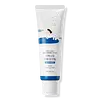What's inside
What's inside
 Key Ingredients
Key Ingredients

 Benefits
Benefits

 Concerns
Concerns

 Ingredients Side-by-side
Ingredients Side-by-side

Water
Skin ConditioningDicaprylyl Carbonate
EmollientEthylhexyl Methoxycinnamate
UV AbsorberPropanediol
SolventDibutyl Adipate
EmollientButyl Methoxydibenzoylmethane
UV AbsorberEthylhexyl Triazone
UV AbsorberBis-Ethylhexyloxyphenol Methoxyphenyl Triazine
Skin ConditioningAscorbyl Glucoside
AntioxidantC20-22 Alkyl Phosphate
EmulsifyingC20-22 Alcohols
Emulsion StabilisingBenzotriazolyl Dodecyl P-Cresol
UV AbsorberTranexamic Acid
AstringentSodium Hyaluronate
HumectantCarnosine
Skin ConditioningTocopherol
AntioxidantCaprylyl/Capryl Glucoside
CleansingParfum
MaskingXanthan Gum
EmulsifyingPolyacrylate Crosspolymer-6
Emulsion StabilisingBHT
AntioxidantSodium Hydroxide
Buffering1,2-Hexanediol
Skin ConditioningO-Cymen-5-Ol
AntimicrobialWater, Dicaprylyl Carbonate, Ethylhexyl Methoxycinnamate, Propanediol, Dibutyl Adipate, Butyl Methoxydibenzoylmethane, Ethylhexyl Triazone, Bis-Ethylhexyloxyphenol Methoxyphenyl Triazine, Ascorbyl Glucoside, C20-22 Alkyl Phosphate, C20-22 Alcohols, Benzotriazolyl Dodecyl P-Cresol, Tranexamic Acid, Sodium Hyaluronate, Carnosine, Tocopherol, Caprylyl/Capryl Glucoside, Parfum, Xanthan Gum, Polyacrylate Crosspolymer-6, BHT, Sodium Hydroxide, 1,2-Hexanediol, O-Cymen-5-Ol
Butyl Methoxydibenzoylmethane 2.7%
UV AbsorberHomosalate 13.5%
Skin ConditioningEthylhexyl Salicylate 4.5%
UV AbsorberWater
Skin ConditioningButyloctyl Salicylate
Skin ConditioningPropanediol
SolventAcrylates Copolymer
Butylene Glycol
HumectantCaprylyl Methicone
Skin ConditioningPolyglyceryl-3 Distearate
EmulsifyingBenzotriazolyl Dodecyl P-Cresol
UV AbsorberNiacinamide
SmoothingDiethylhexyl 2,6-Naphthalate
EmollientPolymethylsilsesquioxane
Glycerin
HumectantCalcium Aluminum Borosilicate
1,2-Hexanediol
Skin ConditioningPoly C10-30 Alkyl Acrylate
Emulsion StabilisingPentylene Glycol
Skin ConditioningCetearyl Alcohol
EmollientTromethamine
BufferingMethylpropanediol
SolventGlyceryl Stearate Citrate
EmollientBetula Platyphylla Japonica Juice
Skin ConditioningAcrylates/C10-30 Alkyl Acrylate Crosspolymer
Emulsion StabilisingCarbomer
Emulsion StabilisingEthylhexylglycerin
Skin ConditioningArtemisia Annua Extract
MaskingAnthemis Nobilis Flower Oil
MaskingSodium Stearoyl Glutamate
CleansingGlyceryl Polymethacrylate
Triethoxycaprylylsilane
Pinus Sylvestris Leaf Oil
MaskingSparassis Crispa Extract
Emulsion StabilisingPolyether-1
Allantoin
Skin ConditioningDipropylene Glycol
HumectantGlyceryl Glucoside
HumectantBiosaccharide Gum-1
HumectantTocopherol
AntioxidantPortulaca Oleracea Extract
Skin ConditioningSodium Hyaluronate
HumectantHyaluronic Acid
HumectantAscorbic Acid
AntioxidantButyl Methoxydibenzoylmethane 2.7%, Homosalate 13.5%, Ethylhexyl Salicylate 4.5%, Water, Butyloctyl Salicylate, Propanediol, Acrylates Copolymer, Butylene Glycol, Caprylyl Methicone, Polyglyceryl-3 Distearate, Benzotriazolyl Dodecyl P-Cresol, Niacinamide, Diethylhexyl 2,6-Naphthalate, Polymethylsilsesquioxane, Glycerin, Calcium Aluminum Borosilicate, 1,2-Hexanediol, Poly C10-30 Alkyl Acrylate, Pentylene Glycol, Cetearyl Alcohol, Tromethamine, Methylpropanediol, Glyceryl Stearate Citrate, Betula Platyphylla Japonica Juice, Acrylates/C10-30 Alkyl Acrylate Crosspolymer, Carbomer, Ethylhexylglycerin, Artemisia Annua Extract, Anthemis Nobilis Flower Oil, Sodium Stearoyl Glutamate, Glyceryl Polymethacrylate, Triethoxycaprylylsilane, Pinus Sylvestris Leaf Oil, Sparassis Crispa Extract, Polyether-1, Allantoin, Dipropylene Glycol, Glyceryl Glucoside, Biosaccharide Gum-1, Tocopherol, Portulaca Oleracea Extract, Sodium Hyaluronate, Hyaluronic Acid, Ascorbic Acid
 Reviews
Reviews

Ingredients Explained
These ingredients are found in both products.
Ingredients higher up in an ingredient list are typically present in a larger amount.
1,2-Hexanediol is a synthetic liquid and another multi-functional powerhouse.
It is a:
- Humectant, drawing moisture into the skin
- Emollient, helping to soften skin
- Solvent, dispersing and stabilizing formulas
- Preservative booster, enhancing the antimicrobial activity of other preservatives
Benzotriazolyl Dodecyl P-Cresol, also known as Tinogard TL, is a broad-spectrum UV absorber.
It helps stabilize light-sensitive ingredients and protects other ingredients from breaking down due to light exposure (especially in transparent packaging).
This ingredient helps extend a product’s shelf life by preventing both photolytic (light-induced) and photo-oxidative degradation. It’s typically used at low concentrations, around 0.01% to 0.1%.
Despite being a chemical UV filter, this ingredient can be found in "100% mineral sunscreens". This is due to regulatory loopholes.
Learn more about Benzotriazolyl Dodecyl P-CresolAlso known as Avobenzone, this ingredient is a chemical sunscreen filter that provides protection in the UV-A range.
Avobenzone is globally approved and is the most commonly used UV-A filter in the world.
Studies have found that avobenzone becomes ineffective when exposed to UV light (it is not photostable; meaning that it breaks down in sunlight). Because of this, formulations that include avobenzone will usually contain stabilizers such as octocrylene.
However, some modern formulations (looking at you, EU!) are able to stabilize avobenzone by coating the molecules.
Avobenzone does not protect against the UV-B range, so it's important to check that the sunscreen you're using contains other UV filters that do!
The highest concentration of avobenzone permitted is 3% in the US, and 5% in the EU.
Learn more about Butyl MethoxydibenzoylmethanePropanediol is an all-star ingredient. It softens, hydrates, and smooths the skin.
It’s often used to:
Propanediol is not likely to cause sensitivity and considered safe to use. It is derived from corn or petroleum with a clear color and no scent.
Learn more about PropanediolSodium Hyaluronate is hyaluronic acid's salt form. It is commonly derived from the sodium salt of hyaluronic acid.
Like hyaluronic acid, it is great at holding water and acts as a humectant. This makes it a great skin hydrating ingredient.
Sodium Hyaluronate is naturally occurring in our bodies and is mostly found in eye fluid and joints.
These are some other common types of Hyaluronic Acid:
Learn more about Sodium HyaluronateTocopherol (also known as Vitamin E) is a common antioxidant used to help protect the skin from free-radicals and strengthen the skin barrier. It's also fat soluble - this means our skin is great at absorbing it.
Vitamin E also helps keep your natural skin lipids healthy. Your lipid skin barrier naturally consists of lipids, ceramides, and fatty acids. Vitamin E offers extra protection for your skin’s lipid barrier, keeping your skin healthy and nourished.
Another benefit is a bit of UV protection. Vitamin E helps reduce the damage caused by UVB rays. (It should not replace your sunscreen). Combining it with Vitamin C can decrease sunburned cells and hyperpigmentation after UV exposure.
You might have noticed Vitamin E + C often paired together. This is because it is great at stabilizing Vitamin C. Using the two together helps increase the effectiveness of both ingredients.
There are often claims that Vitamin E can reduce/prevent scarring, but these claims haven't been confirmed by scientific research.
Learn more about TocopherolWater. It's the most common cosmetic ingredient of all. You'll usually see it at the top of ingredient lists, meaning that it makes up the largest part of the product.
So why is it so popular? Water most often acts as a solvent - this means that it helps dissolve other ingredients into the formulation.
You'll also recognize water as that liquid we all need to stay alive. If you see this, drink a glass of water. Stay hydrated!
Learn more about Water